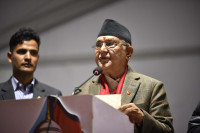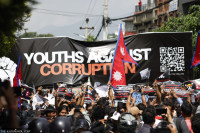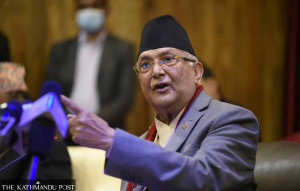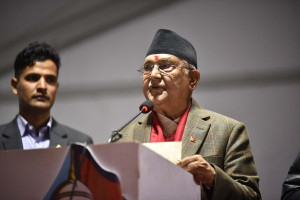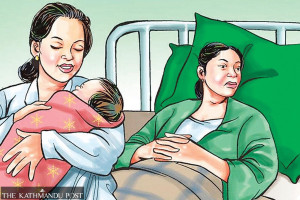Editorial
Madhesh now
Without viable provinces, the glue that holds federal and local units together, the federal system will collapse.
The game of musical chairs continues in the Madhesh provincial assembly. After just 25 days of becoming chief minister, Jitendra Sonal had to resign on Saturday. This happened after two Maoist Centre lawmakers defected and refused to back his government. Before him, Satish Kumar Singh had served in the same position for 16 months. Prior to that, it was Saroj Kumar Yadav who occupied the post for 17 months. This fast-changing cast of characters in Madhesh after the 2022 provincial elections is indicative of the larger failure of the provincial system to take root. It is strange that Madhesh should see this level of instability. While the provincial governments around the country were changing nearly every year after the 2017 provincial elections, the government of Lalbabu Raut in Madhesh had served out a full five-year term. One reason for the stability of the Raut government was that while the Nepali Congress, the CPN-UML and the Maoist Centre between them formed governments in other provinces, the Madheshi parties were in the majority in the first Madhesh provincial assembly. Yet in the second assembly, the traditional parties had made a roaring comeback and sidelined the Madhesh-based outfits.
In a way, the first Madhesh assembly had captured the essence of federalism. While the governments in other provinces were formed and dismantled according to the whims of the more conservative Congress or the UML leaders at the centre, Madhesh functioned with a lot of autonomy, just as envisioned in the new constitution. The assembly made a concerted effort to wrest power and resources from the centre, even as the chief ministers of other pliant provinces quietly implemented the centrist policies of their mother parties. But then the main Madhesh-based parties fractured—and as did the core Madheshi agendas. Today, the Madhesh provincial government apparatus has become no different to the other provincial governments. They have all come to be seen as dysfunctional, corrupt and inefficient—with some justification. It also bolsters the argument of the anti-federalists that the provinces are a needless burden on state coffers and can be done without. This argument is being voiced even more forcefully in the wake of the Gen Z uprising as more conservative forces find their voice.
Right now, the chief ministers and provincial assembly heads find themselves at loggerheads with the new Sushila Koirala government. In its bid to impose austerity, it has cut trimmed many of their privileges, including staff. The provinces see this as an assault on their authority and an overreach of the federal executive. This is indeed the case. Yet the voices that could strongly defend the rights of the provinces are getting weaker. As the country enters another election cycle, the sceptics of provinces as a viable tier of government are in the ascendancy, even in Madhesh. The proponents and practitioners of federalism have been put on notice. If the provinces continue in their current dysfunctional way, their days might be numbered. And without the provinces, the glue that holds the federal and local units together, the federal system will collapse. With it will also die the age-old aspiration of the traditionally marginalised groups and localities for justice and equality.




 7.12°C Kathmandu
7.12°C Kathmandu
